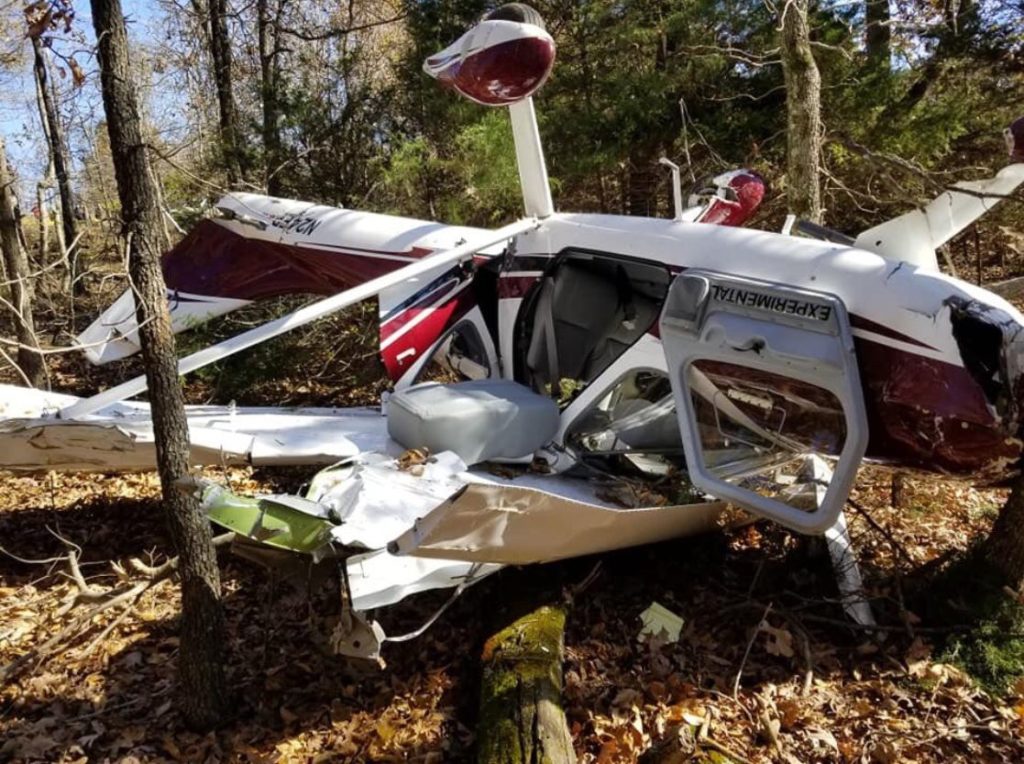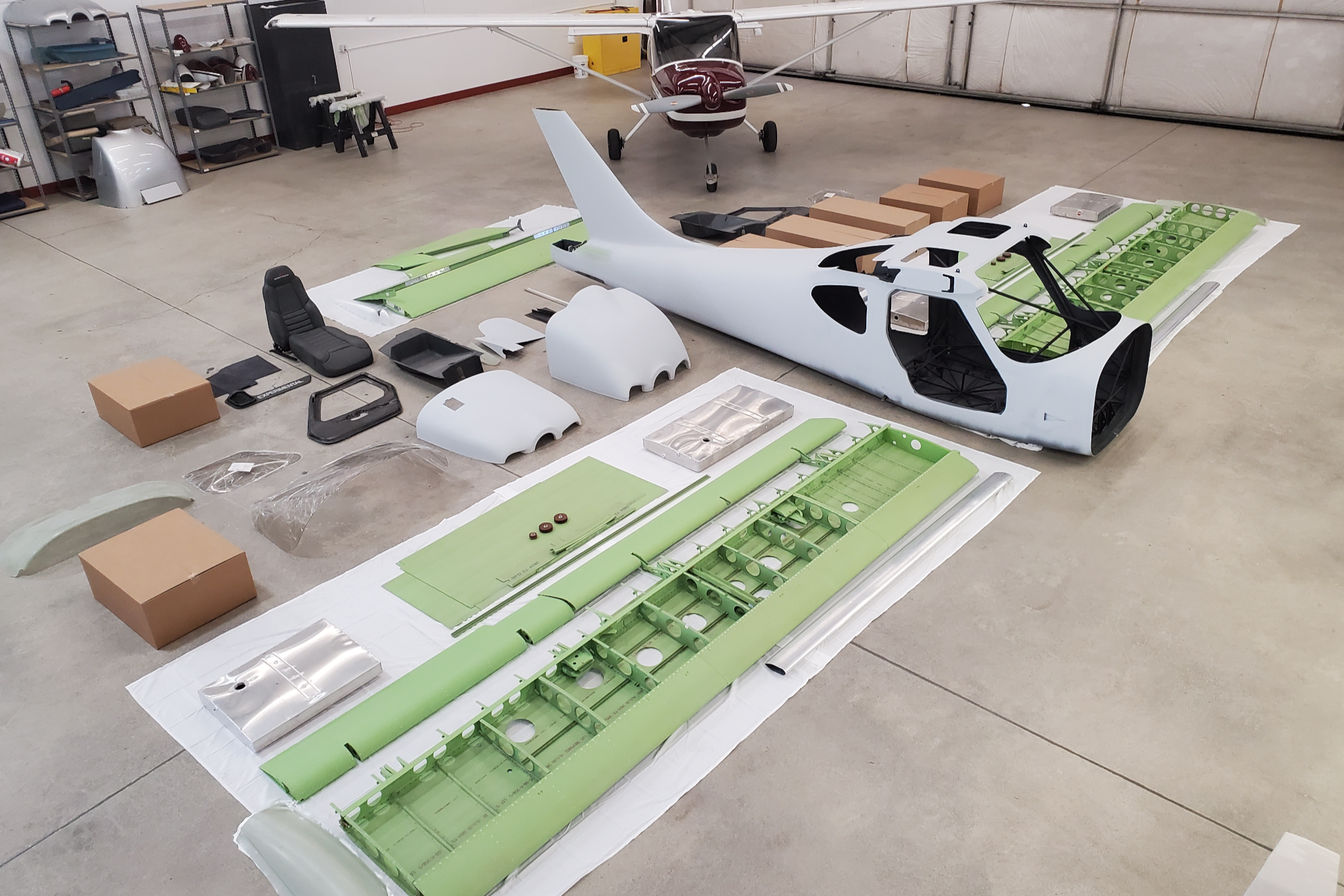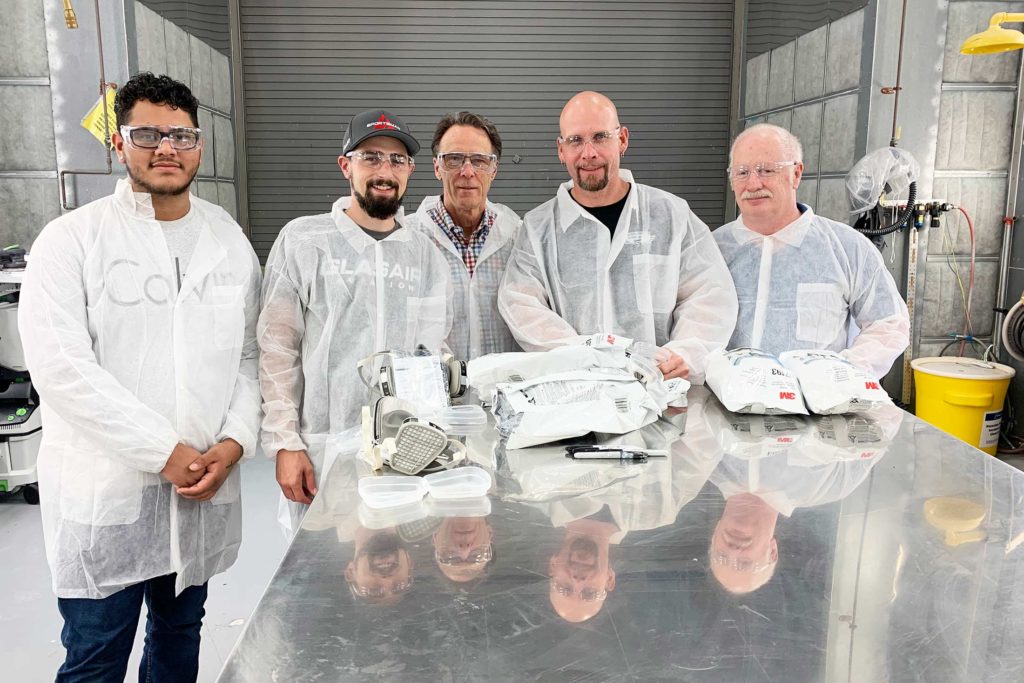What are the safest light aircraft available? Arguably, the Glasair Glastar/Sportsman family.
A recent Kitplanes article included a chart illustrating light aircraft accident fatalities vs. cruise speed. The Sportsman (and the Sportsman predecessor, Glastar) tracks well below the trendline. Our airplane’s uniquely broad speed multiple of 3.6x (low stall speed to high cruise speed) is automatically advantageous in a comparison like this one. Still, the Sportsman delivers a wealth of engineering innovations, robust materials, construction techniques, and features that contribute to the operational safety of the aircraft. The Sportsman is not only the most versatile four-seat airplane available but possibly the safest as well. Here’s why:

Image credit: Kitplanes
LOW STALL SPEED
The Sportsman’s generous control surfaces deliver tactile authority to pilots right down to the airframe’s low 42 KTS stall speed. Two Delta Vortex Generators on each wing contribute to low-speed stability. The airplane’s stall characteristics are benign and predictable. Sportsman owners refer to a “mush” rather than “break” when the Sportsman approaches a stall, power-on, and power-off.
Most importantly, the low stall speed and inherent light weight of the Sportsman guarantee very low “Crash Energy” or “Impact Energy” to dissipate, which experts agree is the single most significant factor in crash survivability. Crash force is directly proportional to the speed and mass of the aircraft, so the Sportsman measures particularly well in this regard.
THE SAFETY CAGE
The Safety Cage in the Sportsman is the structural center of the aircraft and is constructed with varying diameters of Chromoly steel tubing. The robust structure surrounds passengers, providing protection that mimics desert rally cars.

Sportsman owners know that the Safety Cage saves lives because we pay attention to the NTSB accident reports. Only a short time before the date of this writing, a 2018 Sportsman suffered an unfortunate accident in Arkansas. The pilot and passenger came to rest upside-down in a forest near Huntsville Municipal Airport. Despite substantial damage to the airframe, both were unhurt. The pilot only managed to give his head a hefty bump after he released his restraint since, immediately after the event, he didn’t realize he was inverted.

The use of varied materials in the Sportsman is clever, maximizing the strengths of each type of proven aerospace structure. But the Safety Cage is quite exceptional on its own. It affords superb impact protection, enveloping the passengers from all sides with redundant load paths.
HIGH POWER
Equipped with the energetic, industry-tested Lycoming IO-390 engine (210 HP) and constant-speed propeller, a flick of the throttle will get pilots out of trouble, even at gross weight and high-density altitude. Too often, Controlled Flight into Terrain (CFIT) is caused by insufficient climb performance, and most departure stalls are due to low performance margin. The Sportsman’s powerplant/prop combinations assure confidence in otherwise challenging conditions.
LONG ENDURANCE
Fifty gallons of fuel onboard, fuel injection, electronic ignition, and a slippery airframe assure that almost any charted airport is accessible in the frugal Sportsman. The aircraft not only opens many cross-country flight possibilities but also ekes out those last few miles in an emergency, minimizing fuel exhaustion accidents.

SITUATIONAL AWARENESS
Glasair’s new instrument panels all include multifunction EFIS displays as standard equipment. The panels present pilots with crucial information, including navigation, terrain, Angle of Attack, synthetic vision, in-cockpit weather, and engine monitoring. While discussing avionics, know that all of Glasair’s new panel upgrades include integrated autopilots. When you encounter sudden IMC, activating the autopilot can dramatically reduce the workload as you find your way out of the weather.
Side by side seating allows better cockpit resource management. Even non-pilots can be briefed to aid in spotting traffic or handling other tasks.
SUPERB VISIBILITY
The windshield and side windows in the Sportsman are expansive. Combined with skylights overhead and the pilot’s commanding seat position, occupants share a clear view of their surroundings, even in aggressive banked turns. The engine cowl slopes downward from the windshield, allowing forward vision on the round, even with tailwheel landing gear.
TOLERANT CG
The Sportsman’s high useful load provides a considerable margin against overloading the airplane. Our full-fuel payload is impressive. The position of the fuel tanks, plus the rear-facing seats, makes it difficult to load the airplane improperly.

SAFETY ENHANCING OPTIONS
For maximum peace of mind for both pilots and family, Glasair offers airframe parachutes from BRS and airbag-equipped harnesses from AmSafe that augment the Sportsman’s intrinsic safety. Both parachutes and airbags can be added as aftermarket upgrades as well.
Smaller, but significant design elements contribute to the Sportsman’s System of Safety.
- Egress from the cockpit is easy due to large doors and high seats. The third aft door eliminates the need for rear passengers to climb through the front doors.
- The deep foam section of our bottom seat cushions absorbs energy in a crash.
Combine sound engineering, rugged materials, innovative construction, and predictable flight behavior, the result is the Sportsman, a modern aircraft that flies safely by design. There has never been an airframe failure in a Glasair aircraft. In the world of Experimental Amateur-Built airplanes, the Sportsman’s System of Safety should be considered by all prospective airplane buyers.



